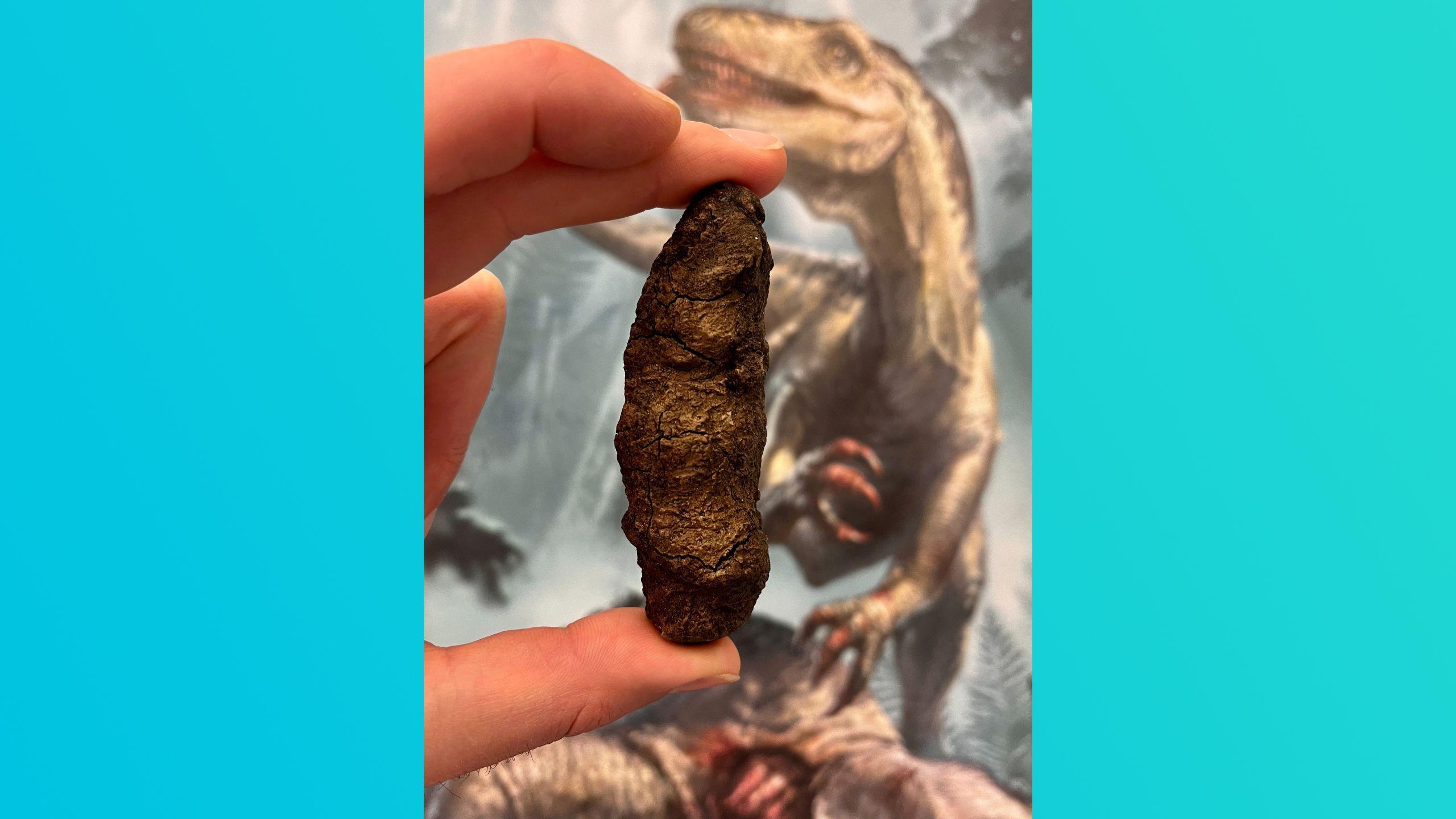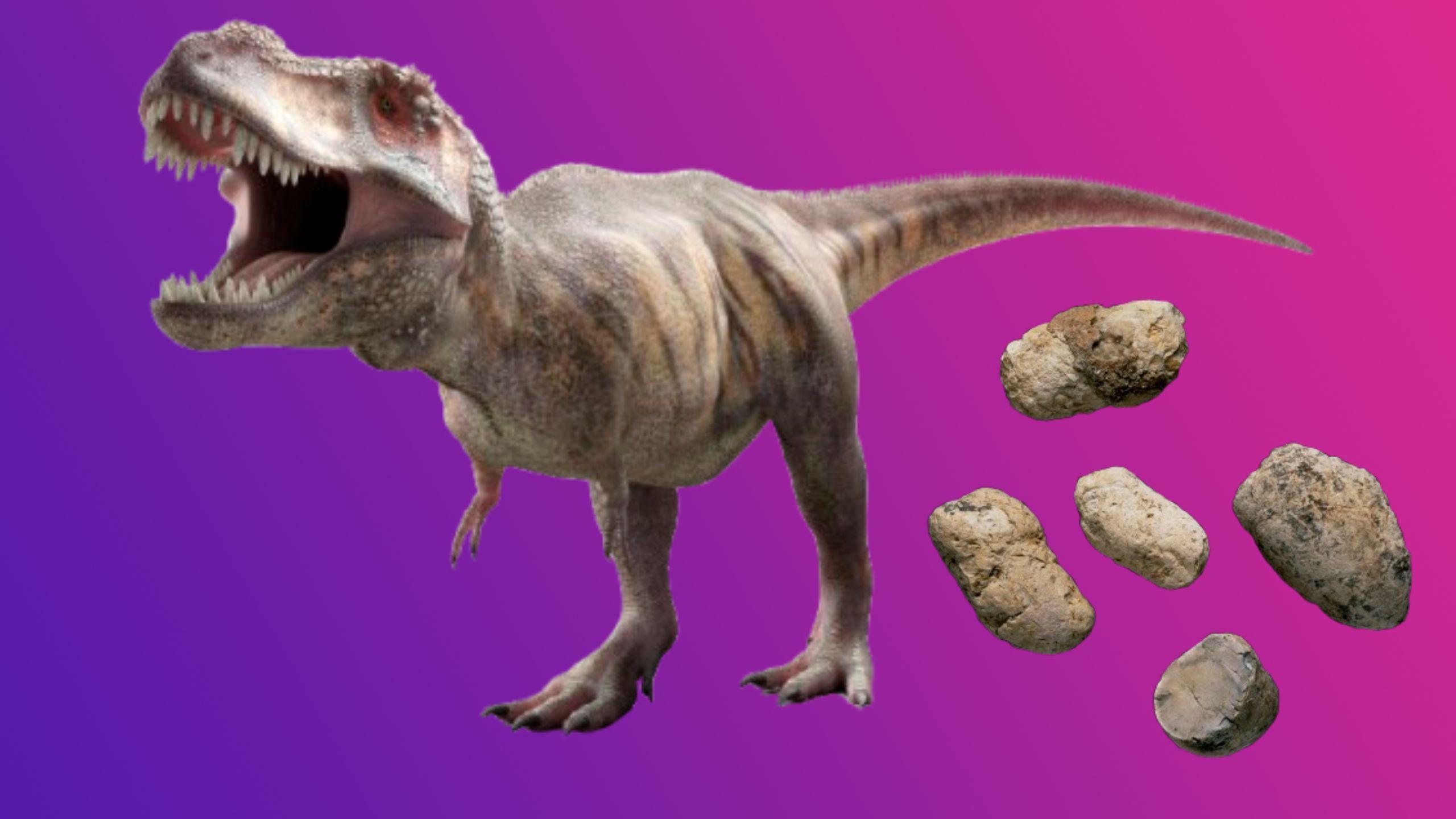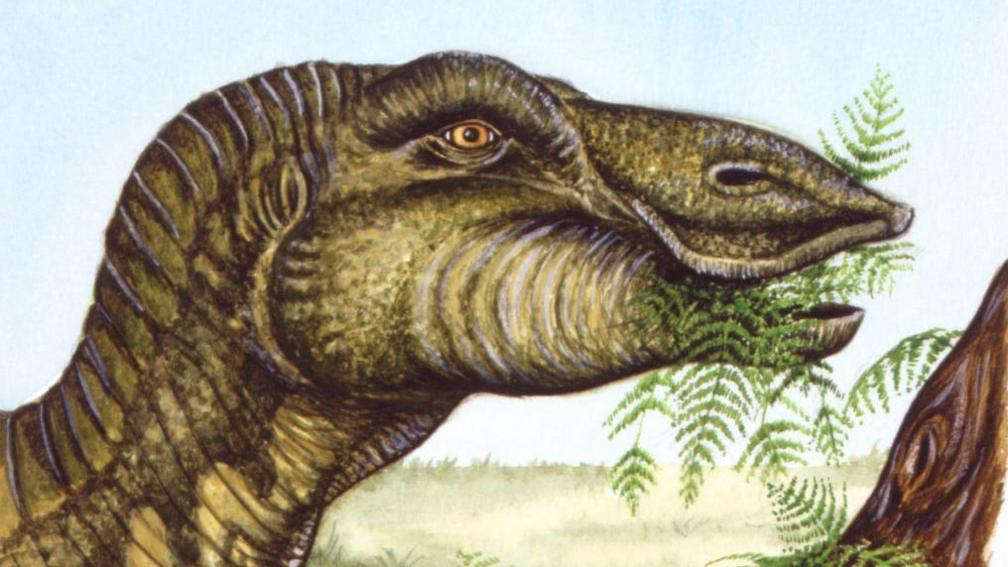Could ancient poo reveal why dinosaurs lasted for millions of years?

- Published
Scientists have long studied fossilised bones of dinosaurs - it's what inspired the Jurassic Park films.
But a team of archaeologists and biologists from Sweden, Norway, Poland, and Hungary, have used high tech equipment to study something else from the prehistoric past... dino poo!
They have decided to take a closer look at fossilised dinosaur poo in order to gain better understanding of what the animals ate millions of years ago.
They think looking closely at the coprolites (the scientific name for fossilised poop) can reveal secrets about how the dinosaurs managed to roam the earth for many millions of years, when other creatures of the time died out quickly.
First dinosaur named 200 years ago - what have we learned?
- Published14 February 2024
Isle of Wight dino is 'most complete' in more than 100 years
- Published10 July 2024
New species of giant dinosaur discovered in Spain
- Published11 September 2024
How do you study 200 million-year-old poo?

The scientists from Uppsala University in Sweden studied around 500 samples of dino droppings gathered over a 25 year period from dig sites in Poland.
Martin Qvarnström, lead author of the study and palaeontologist said they studied the shape and contents of the faeces, linking them to fossilized skeletons and footprints found at the sites.
The researchers were then able to identify and categorize the animals that likely produced them.
'Who ate whom is true detective work'

"Eat your veggies kids!"
"Being able to examine what animals ate and how they interacted with their environment helps us understand what enabled dinosaurs to be so successful," added Mr Qvarnström.
The team used a kind of X-Ray scanner called a synchrotron, ten trillion times more powerful than one you may have seen in a hospital, if you break a bone.
This allows the scientists to study things at a really small and detailed molecular and atomic level.
By using this technology, they were able to detect the remains of fish, insects and plants and sometimes other prey animals in the coprolites.
They even managed to see tiny beetles and half-complete fish in well preserved pieces of poo.
So, how did the dinosaurs survive for millions of years?
The Big Question: What's the difference between all the dinosaur periods?
Sorry to sound like your parents, but they actually survived by eating their greens.
Many of the coprolites contained evidence that the dinosaurs ate lots of plants.
This could have been triggered by an increase in volcanic activity, causing more nutrient-rich earth for plants to thrive.
This was followed by the emergence of large and more diverse herbivore (plant-eating) dinosaurs.
The team found that the contents of poop from the first large plant-eating dinosaurs - the long-necked, sauropodomorphs - contained large quantities of tree ferns but also many other types of plants and charcoal.
They suspect the charcoal helped the animals to safely digest the ferns, which can be toxic.
Grzegorz Niedźwiedzki, the study’s senior author and a paleontologist based at Uppsala’s department of organismal biology; evolution and development, said the reason behind the dinosaurs’ evolutionary success was a message that still applied today: “Eat your veggies and live longer.”
The 'Age of Dinosaurs', known as the Mesozoic Era included three time periods; the Triassic, Jurassic, and Cretaceous Periods - spanning roughly 186 million years.
